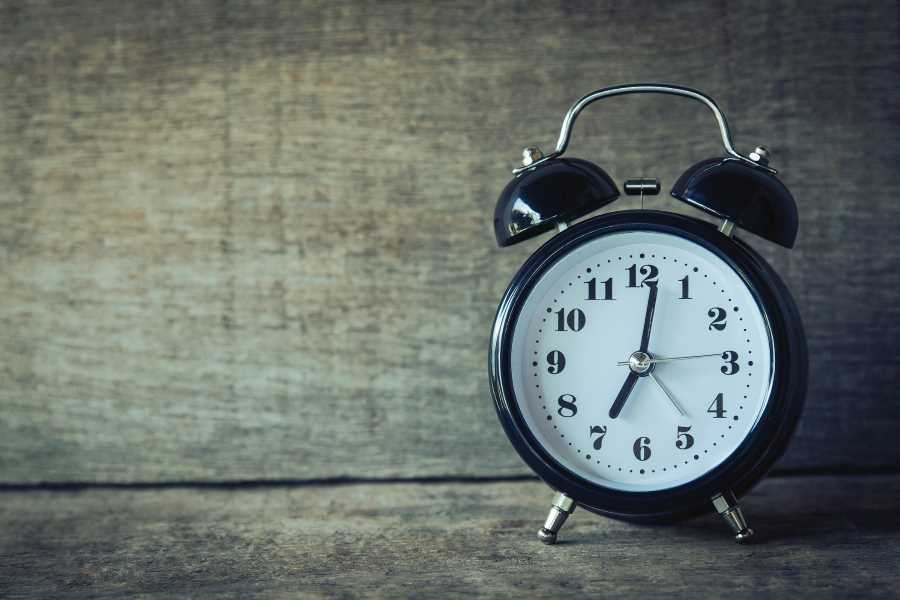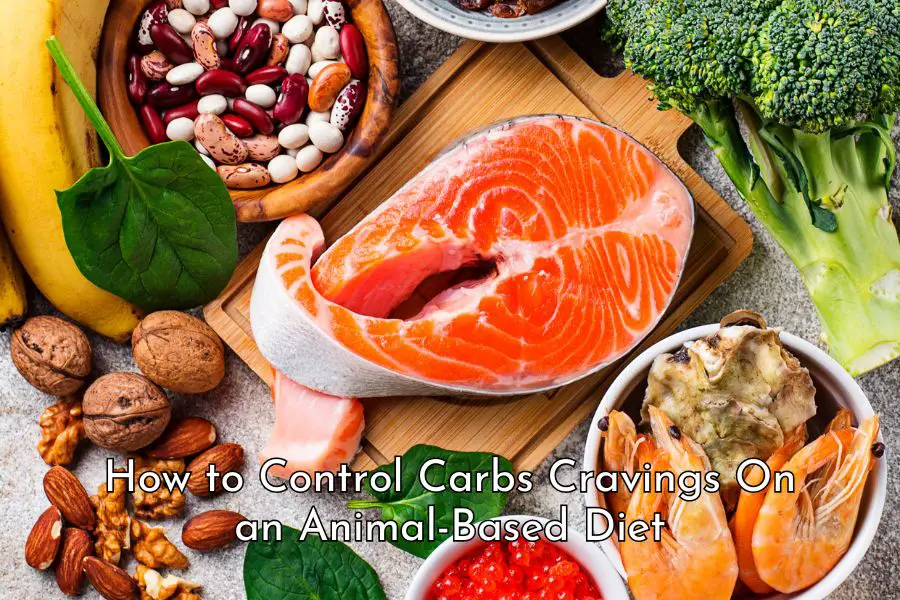Everyone is already doing intermittent fasting to some extent but what is the best way of doing it?
This post covers intermittent fasting best practices applicable to the carnivore diet as well as other diets. In particular, it addresses:
- When is the best time to place your eating window (i.e. earlier vs later during the day)
- What is the ideal eating duration (4 hours, 8 hours, or 12 hours)
- How to lengthen the actual fasted state
- Meal timing strategies to increase fat loss and muscle synthesis
- The importance of maintaining a regular eating pattern even during weekends.
What is intermittent fasting?
Intermittent fasting refers to an eating pattern that switches between periods of eating and fasting.
This is what we do all the time, when we don’t eat, we fast, when we eat, we break the fast.
However, the key issues here are the length of the fasting period and the regularity of the eating pattern.
You can consume 2,000 calories in a day spreading out over 6 small meals from 7 a.m. to 9 p.m. In this case, you would be fasting intermittently during the day from a few hours to 10 hours.
You can also consume the same amount of calories in two meals from 9 a.m. to 5 p.m and would be fasting for 16 hours a day.
You can even consume 2,000 calories in a single meal (yes, it is entirely possible with meat and fat) and, in this case, you would be fasting for around 23 hours a day.
The two later eating patterns are examples of intermittent fasting routines with prolonged fasting periods between meals.
What you eat is probably the most important determinant of your health, but when you eat and how often you eat can be just as crucial and have a significant impact on your health.
When your feeding window is compressed, your body has an extended period of time when it doesn’t have to engage in digesting food and, therefore, is able to carry out activities such as burning fat storage (if there is a calorie deficit), detoxing, deactivating mTOR and activating AMPK which triggers the cellular repair processes.
Animal studies and clinical trials have shown that intermittent fasting increases life span, slows or reverses aging, and improves many health conditions including obesity, diabetes mellitus, cardiovascular disease, cancers, and neurologic disorders.[1, 2, 3, 4, 5]
If you would like to find out more about the benefit of intermittent fasting, please check out this review by de Cabo and Mattson (2019) published in the prestigious medical journal New England Journal of Medicine.
Intermittent fasting on the carnivore diet
A great thing about the carnivore diet is that you will naturally gravitate toward a certain intermittent fasting routine anyway because foods on the carnivore diet are generally calorie-dense, nutrient-dense and highly satiating.
On the carnivore diet, you don’t need to eat as often and you don’t need to eat as much. In a self-reported survey of 2,029 people who have been on the carnivore diet for at least 6 months, it was found that 81% of the participants had only 1 to 2 meals a day and 2% even ate less than once a day.[6]
However, as I have previously written in this post, when you first start the carnivore diet, the focus is on nourishing your body, healing and adapting to this way of eating, not meal timing, meal frequency or how much you are eating.
You might be overweight or even obese but might have nutrition deficiency at the same time. Therefore, you might find that you have a huge appetite at the beginning which is your body’s cry for nutrients that it has been missing.
So, to keep things simple, please just eat when you are genuinely hungry and eat until you are full for at least a full month before looking at establishing some intermittent fasting routine.
The only other thing that you might want to pay attention to at this stage is to try to eat at least 3 hours before your bedtime so that, by the time you go to bed, your body has finished digesting and you can have a good rest and benefit more from a deep fasted state.
Once you are over the adaptation phase, you can look at the strategies below to work out the best intermittent fasting routine for yourself.
Intermittent fasting best practice
The intermittent fasting best practices covered below are largely based on principles set out in a review on optimizing meal timing by Manoogian et al (2019) titled “When to Eat: The Importance of Eating Patterns in Health and Disease” published in the Journal of Biological Rhythms.
1. When is the best time to place your eating window?
The best time to place your eating window is earlier in the day when you are most active and have exposure to the natural light, but not immediately after waking up and definitely not later into the night.
For example, if you wake up at 6 a.m. and want to eat within an 8-hour window, a feeding window from 7 a.m. to 3 p.m. is much better than one that lasts from 3 p.m. to 11 p.m.
We will look at the reasons for this recommendation from the evolutionary perspective and from the angle of scientific evidence.
Evolutionary perspective
For millions of years, our ancestors’ lives were in sync with the cycles of the sun.
They got up at sunrise, hunted, gathered food, built shelters, collected water, cooked and ate during the daytime, and rested and slept after dark.
It would have been difficult if not impossible for them to eat or do any of the other activities after dark.
As a result, through million years of evolution, the human body and its innate circadian rhythm have been built to correspond to the rhythm of the sun.
Our sleep and wake cycles, digestive systems, hormone releases and heart function are set to work in perfect harmony with night and day cycles.
As we will explore in the next section, there will be detrimental impacts on our health if our daily routine including our eating routine becomes out of sync with the natural light-dark cycles.
Therefore, the first thing we can agree upon is it’s best to eat when we are most active and when we have exposure to the natural sunlight, like the way our ancestors did for millions of years.
Research evidence
The available research evidence indicates that it’s best to consume most of the calories earlier in the day and avoid eating early in the morning as well as close to bedtime.
Melatonin, a hormone produced in response to darkness and associated with the control of the sleep-wake cycle, has an inverse relationship with insulin sensitivity (i.e. how responsive your cells are to insulin).
Melatonin levels remain low during the day when you are exposed to the natural light, but begin to rise after the onset of darkness, peak in the middle of the night and begin to decline towards the morning.[7, 8]
In contrast, your insulin sensitivity is high during the early part of the day, reaches its peak at around noon, but begins to decline in the afternoon and dips to its lowest level in the middle of the night before rising slowly again towards the morning. [9, 10]
This means your body is best at metabolizing food earlier in the day, especially around mid-day because this is when you are most insulin sensitive. [11, 12]
A study has found that insulin sensitivity in adipose tissue reached its maximum value around noon and was 54% higher than that at midnight. This is a huge difference. [13]
Therefore, it would make sense to, if possible, consume most of your calorie intake around noon time.
It should be noted that, when you are on the carnivore diet, carbohydrate intake is minimal and insulin sensitivity is not such a critical issue. However, when you are most insulin sensitive also happens to be when your melatonin level is at its lowest. Because melatonin has been found to inhibit gastric acid release, when melatonin is low, your body is also best able to produce gastric acid for digestion.
In addition, because melatonin remains relatively high early in the morning until around 8 a.m., it’s best not to eat early in the morning or immediately after waking up before you have the chance to immerse yourself in natural light, lower the melatonin level and increase insulin sensitivity accordingly. [14]
Clearly, it is not a good idea to eat later in the evening and late into the night when your insulin sensitivity is at its lowest.
Your body doesn’t digest food as well later in the evening and during nighttime. You also can’t have a fully rested sleep because your body is still busy digesting. Furthermore, because you are not active during the night, most of what you consume will be stored as fat.
Consequences of misalignment between circadian rhythm and meal-timing
Available evidence indicates that, when there are misalignments between the innate circadian rhythms and external rhythms, there can be many adverse health consequences.
Circadian misalignments such as eating late, eating at night, daytime sleep and nighttime wake due to shift work or voluntary behaviors can increase risks of weight gain, obesity, diabetes, liver diseases, cardiovascular diseases, cancers, digestive diseases, sleep disorders, inflammation and depression.[15, 16, 17]
For example, a study has found that high-calorie breakfast coupled with low-calorie dinner is better for weight loss than low-calorie breakfast and high-calorie dinner.[18]
You will also burn a lot more calories following a morning meal than an evening meal.[19]
Just having late lunch (after 3 p.m.) has been found to hinder weight loss and cause damaging effects on microbiota diversity and composition. [20]
Having late dinner (within 2 hours before bedtime) can decrease glucose tolerance and eating within 2 hours of bedtime can increase the probability of being obese 5 times. In contrast, high caloric intake earlier in the day (2 hours after wake time), can decrease the probability of being obese by 50%. [21, 22]
Summary
In summary, based on available evidence, you should:
- Avoid eating immediately after waking up or very early in the morning because your melatonin level is still high. Get outside, soak up some natural light and let your body slow down melatonin production and increase insulin sensitivity accordingly
- Consume most of your calories earlier in the day, ideally around mid-day which is when your insulin sensitivity is at its peak
- Avoid eating late in the evening or into the night when melatonin levels increase and your insulin sensitivity declines. During this time, digestion is poor, sleep is disrupted, and most energy consumed will be stored as fat.
2. What is the ideal eating duration?
Unfortunately, there isn’t much research evidence available that points to beneficial differences between different feeding duration, for example, 6-hour feeding window vs 8-hour feeding window vs 10-hour feeding window.
There is some evidence that there are significant metabolic benefits of 6-hour and 10-hour eating windows compared to a 12-hour eating window such as weight loss, improved blood glucose, improved insulin sensitivity, blood pressure and oxidative stress. [23, 24]
However, a study that compared a 4-hour feeding window with a 6-hour feeding window has not found any significant difference. Both feeding windows produced comparable weight loss and improvements in insulin sensitivity and oxidative stress compared to controls (no meal-timing restriction). [25]
One small study on the one-meal-a-day diet (15 subjects on two 8-week periods) found no significant effects on heart rate, body temperature, or most blood markers. However, there was an increase in reported hunger, a significant modification of body composition, including reductions in fat mass, significant increases in blood pressure and cholesterol, and a significant decrease in concentrations of cortisol.[26]
Due to the limited evidence available, we don’t know what an ideal feeding duration is yet, but we do know that it shouldn’t be longer than the length of daytime.
For now, you will have to contend with finding a restricted feeding duration that best suits your physiological and social needs.
For some people who are not very physically active and can meet daily energy requirements with a single meal, then one meal a day, i.e. about 1-hour feeding window can work well for them.
For some people who need at least a couple of meals a day to meet their energy needs, then a longer feeding window from 6 to 8 hours may be more suitable.
As mentioned above, most people on the carnivore diet seem to need no more than 1 to 2 meals a day and a 6 to 8 hour feeding window should give them enough time to fit in two meals and accommodate social engagements.
3. How to lengthen the actual fasted state
Technically, you start fasting the moment you stop eating. However, depending on what you eat and how much you eat, your body may take a few hours to completely digest the food and enter the actual fasted state where it is free of the burden of digesting food can begin clearing out debris, recycling old cells and repairing.
For example, if you are to eat from 9 a.m. to 5 p.m., you are technically fasting for 16 hours from 5 p.m. till 9 a.m. the next day. However, your body might still be digesting food until 8 p.m. so you are only in the actual fasted state from 8 p.m. onward.
To help lengthen this fasted state, at the last meal of the day, eat a smaller meal that is easy to digest and, afterward, engage in some gentle exercises in order to clear off circulating glucose quicker.
4. Meal timing strategies to accelerate fat loss and muscle synthesis
Consume most of your daily calories in the earlier part of the day to support fat loss
If you aim to lose fat, aim to consume most of your calories earlier in the day when you are most metabolically active.
A small study has found that identical calorie consumption led to a 2.5-times higher diet-induced thermogenesis increase in the morning than in the evening.[27]
In simple terms, the increase in metabolic rate that follows a morning meal is more than double the increase following an evening meal. This is consistent with the above-mentioned fact that your insulin sensitivity is higher in the earlier part of the day than in the evening.
The authors of the study suggest that “extensive breakfasting should therefore be preferred over large dinner meals to prevent obesity and high blood glucose peaks even under conditions of a hypocaloric diet“.
Consume most of your protein intake earlier in the day for muscle building and maintenance
If your aim is to build muscles, aim to consume most of your protein intake earlier in the day.
Consistent with the fact that you are more metabolically active earlier during the day, your body is also better able to synthesize muscles if protein intake happens earlier during the active phase rather than later. This is supported by research on both mice and humans. [28, 29]
Eating a high-protein meal earlier in the day also helps those of you who are looking to lose fat because muscles help improve your basal metabolic rate and increase resting energy expenditure.[30]
In summary, if you would like to burn fat, consume most of your calories and high protein intake earlier in the day.
If you are already at your ideal weight and want to maintain or build muscles, consume most of your protein intake earlier in the day.
5. The importance of the regularity of eating pattern
In addition to establishing a good eating routine, it’s important to maintain the routine consistently even during weekends.
This is because, although you might not feel it, when you shift your eating routine by a few hours, your body experience metabolic jetlag that is similar to traveling to a different time zone.
If you eat three meals a day from 7 a.m. to 5 p.m. during weekdays but eat brunch at 11 a.m. and dinner at 7 p.m. during the weekend, that is the equivalent of traveling across time zones every weekend.
In a study that used a phone app to monitor people’s eating behavior, even though most participants self-reported 3 meals day structure, most of them were found to have an erratic eating pattern with meal frequency ranging from 4 to 15 times a day. More than half of the participants had an eating duration of more than 14 hours. Many only stopped eating when they slept. Their eating patterns also varied greatly between workdays and weekends. [31]
Irregular eating patterns affect sleep quality, digestion, and hormone releases as well as put stress on the body. Eating meals irregularly has been found to associate with an increased risk of metabolic syndrome and cardiometabolic risk factors, including BMI and blood pressure. [32]
Therefore, it is important to maintain a consistent eating routine and if you need to change your eating duration, make gradual adjustments over time rather than a sudden and major shift.
Reviews of popular intermittent fasting methods
Below are four popular intermittent fasting methods:
- Time restricted feeding: Under this method, you restrict your feeding window to a short period of time such as 4 hours, 6 hours or 8 hours a day and there is no calorie counting involved
- 5:2 fast. Under this fasting program, you will eat as you normally would for five days but will restrict your calorie intake to 500 calories for women and 600 calories for men on 2 fasting days
- Alternate day fasting. With this fasting method, you eat as usual every other day and, on alternate fasting days, you either don’t eat at all or restrict calorie intake significantly, for example consuming up to 500 calories a day.
In my opinion, time-restricted feeding is the best intermittent fasting method because there is no calorie counting involved, no need to fight hunger on fasting days, and it is also much easier to follow once you establish an eating routine.
Conclusion
In summary, based on available evidence, the characteristics of the best intermittent fasting pattern are:
- Avoid eating immediately after waking up or very early in the morning. Spend sometime in the sun and let your body slow down melatonin production and increase insulin sensitivity accordingly before eating the first meal of the day
- Consume most of your calories earlier in the day, ideally around mid-day which is when your insulin sensitivity is at its peak
- Avoid eating late in the evening or into the night when melatonin levels increase and your insulin sensitivity declines. You should finish your last meal at least 3 hours before bedtime to allow time for complete digestion before you fall sleep
- A 6 to 8 hour feeding window should give most people on the carnivore diet enough time to fit in two meals a day and accommodate social engagements
- Adhere to a consistent eating pattern including during weekends. Every time you shift your feeding window, you experience metabolic jetlag equivalent of traveling across timezones
- If you need to adjust your feeding window, transition to the new feeding window gradually rather than suddenly to give your body time to adjust
- Engage in gentle exercises post meal to help your body get into the deep fasted state quicker
- Consume most of your caloric need earlier in the day to support fat loss
- Consume most of your protein intake earlier in the day to support muscle hypertrophy.
If you find this post helpful, please consider sharing this post and my site with your family, friends, and followers. That would be much appreciated. Please also check out my library of articles on the carnivore diet here which is updated regularly.
Disclaimer: The information in this post is for reference purposes only and not intended to constitute or replace professional medical advice. Please consult a qualified medical professional before making any changes to your diet or lifestyle.
Photo credit: Aphiwat Chuangchoem on Pexels





